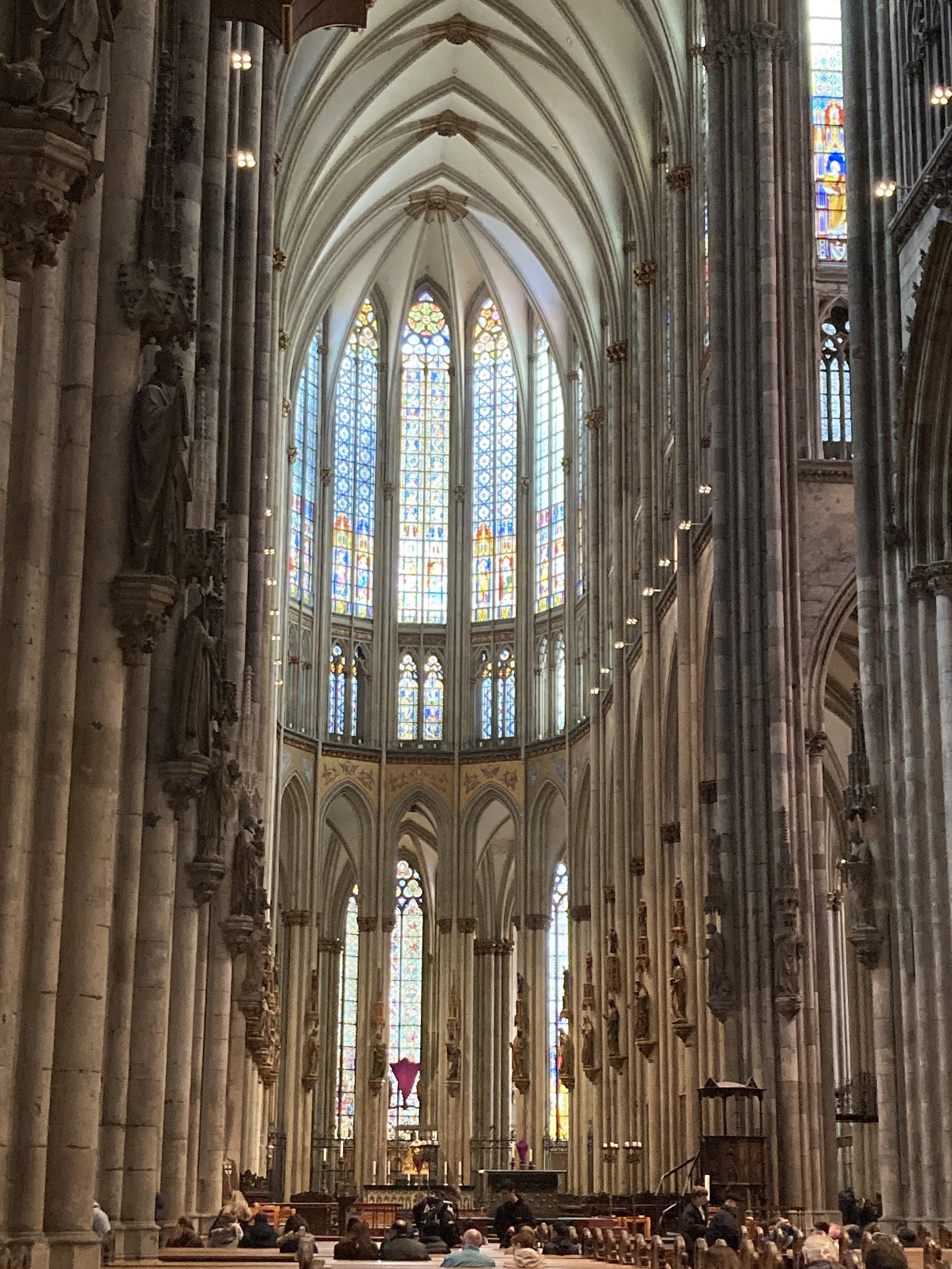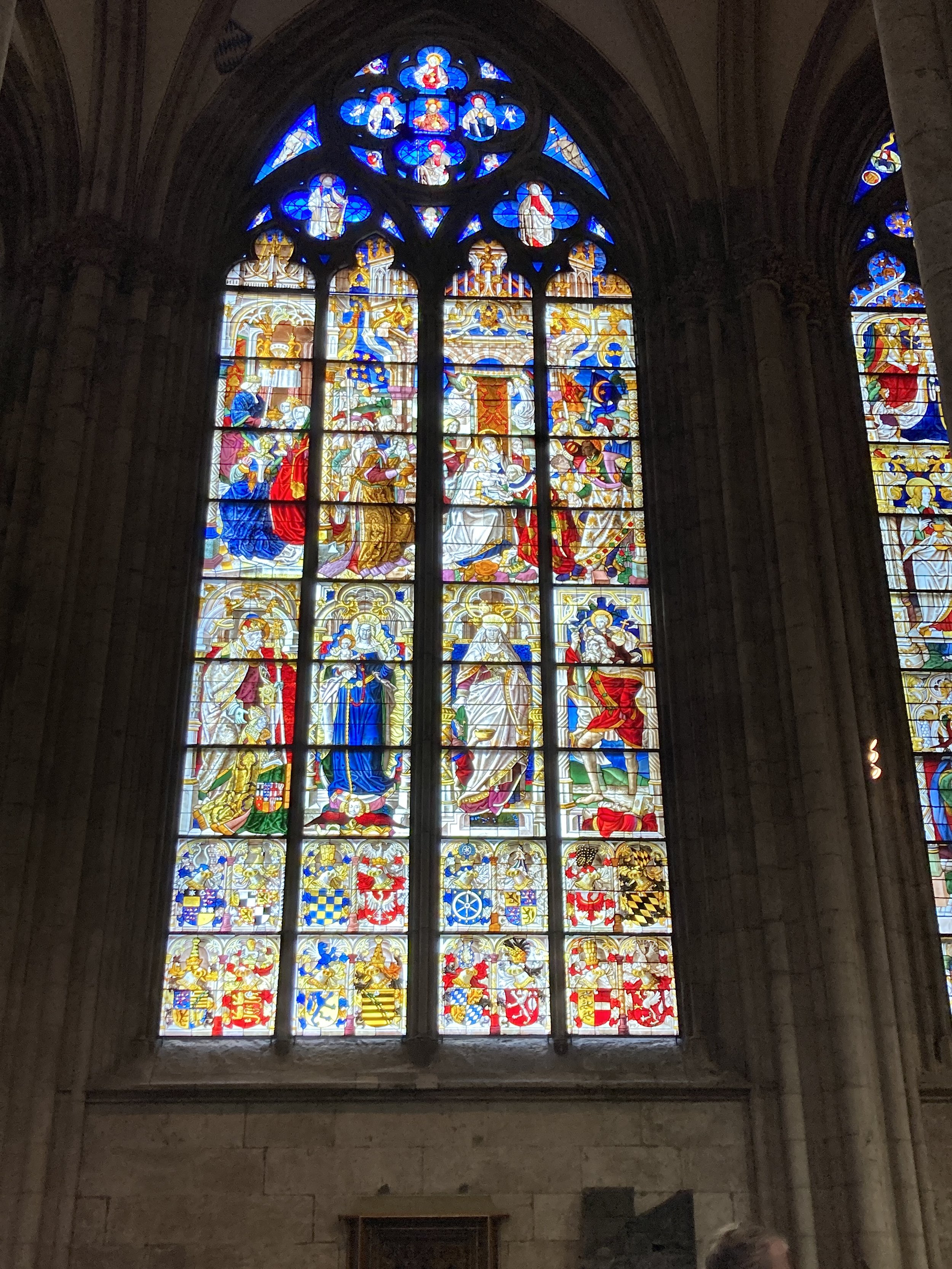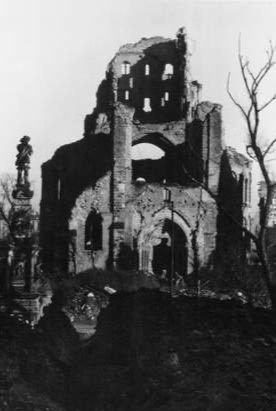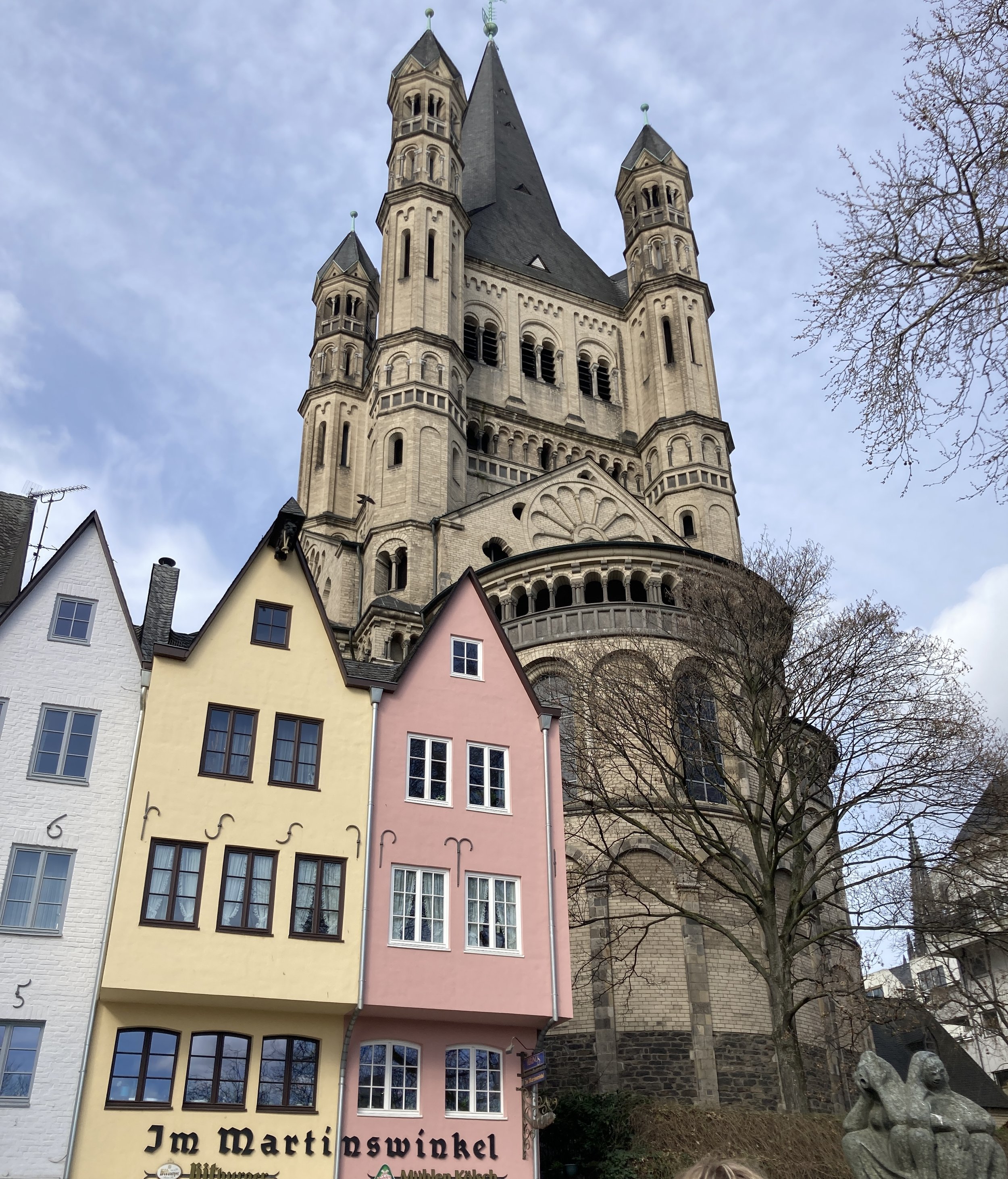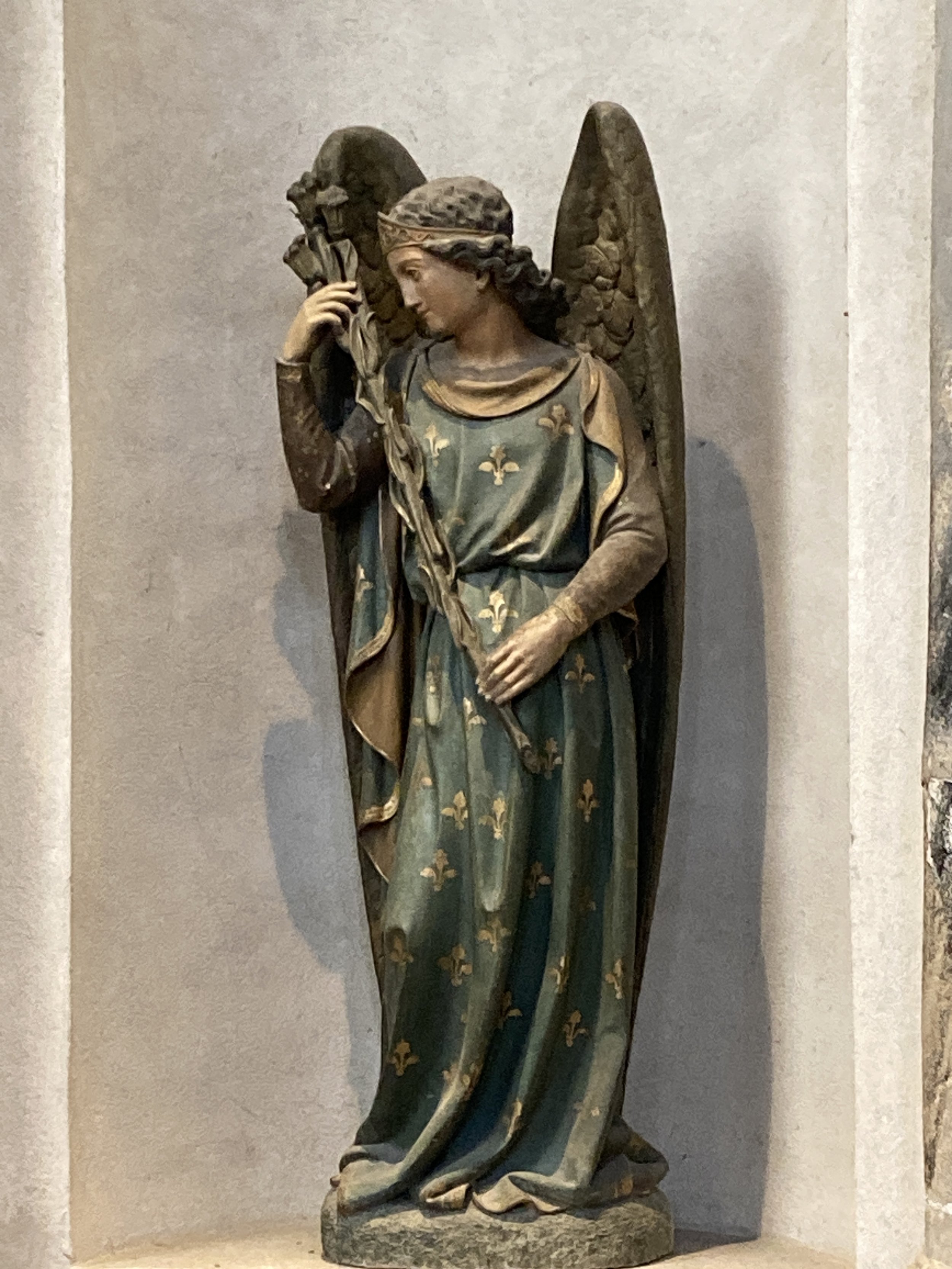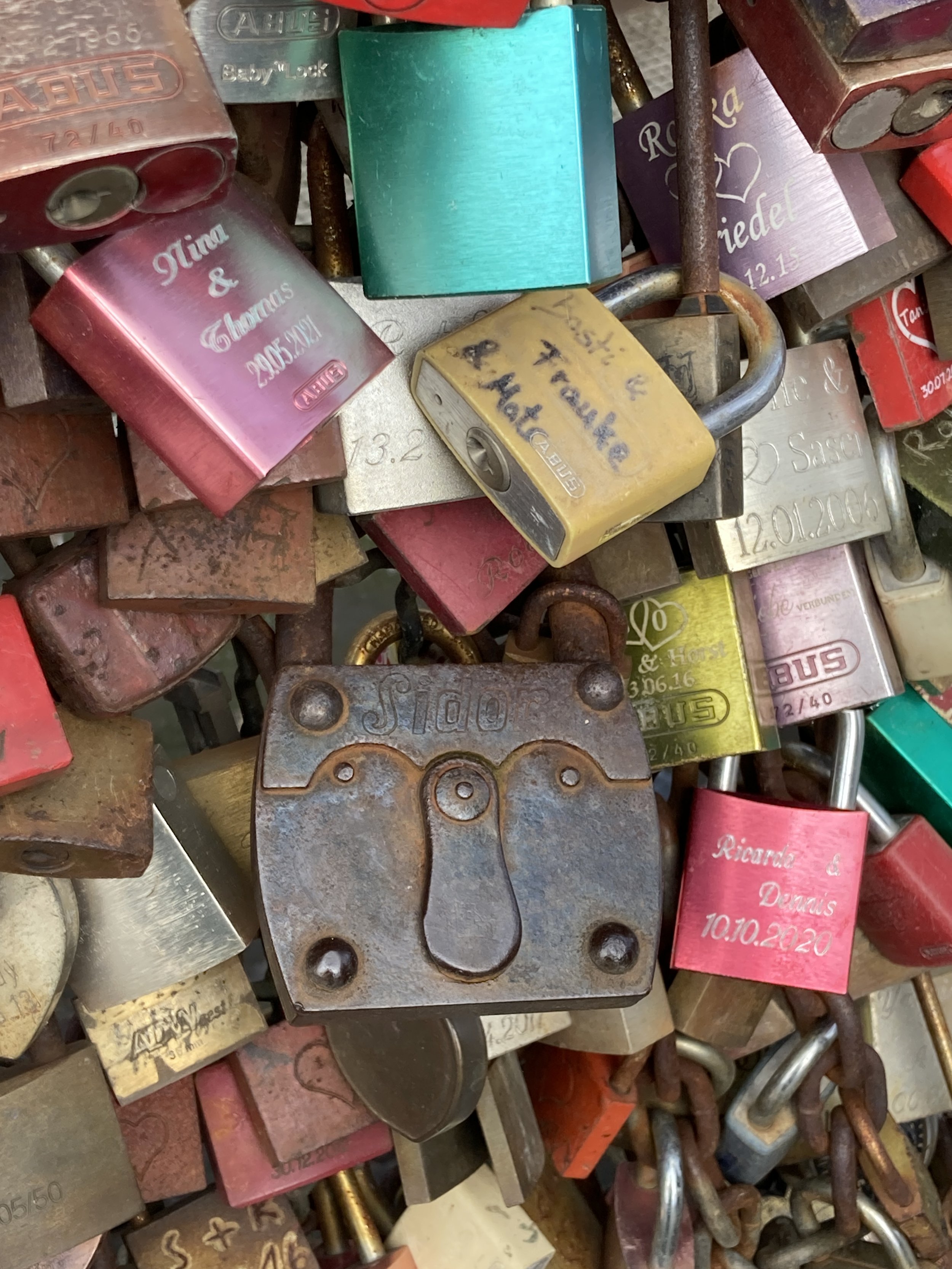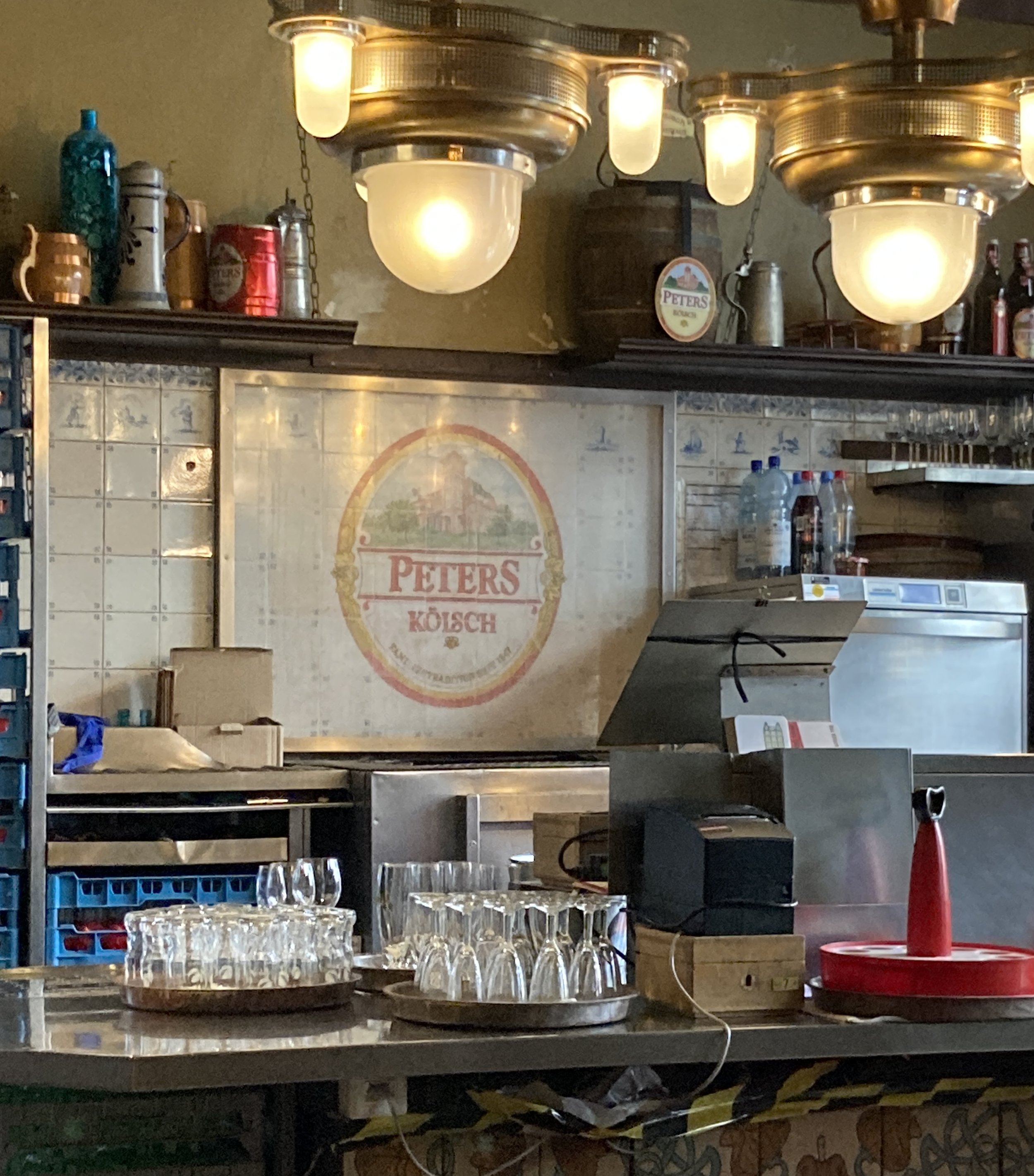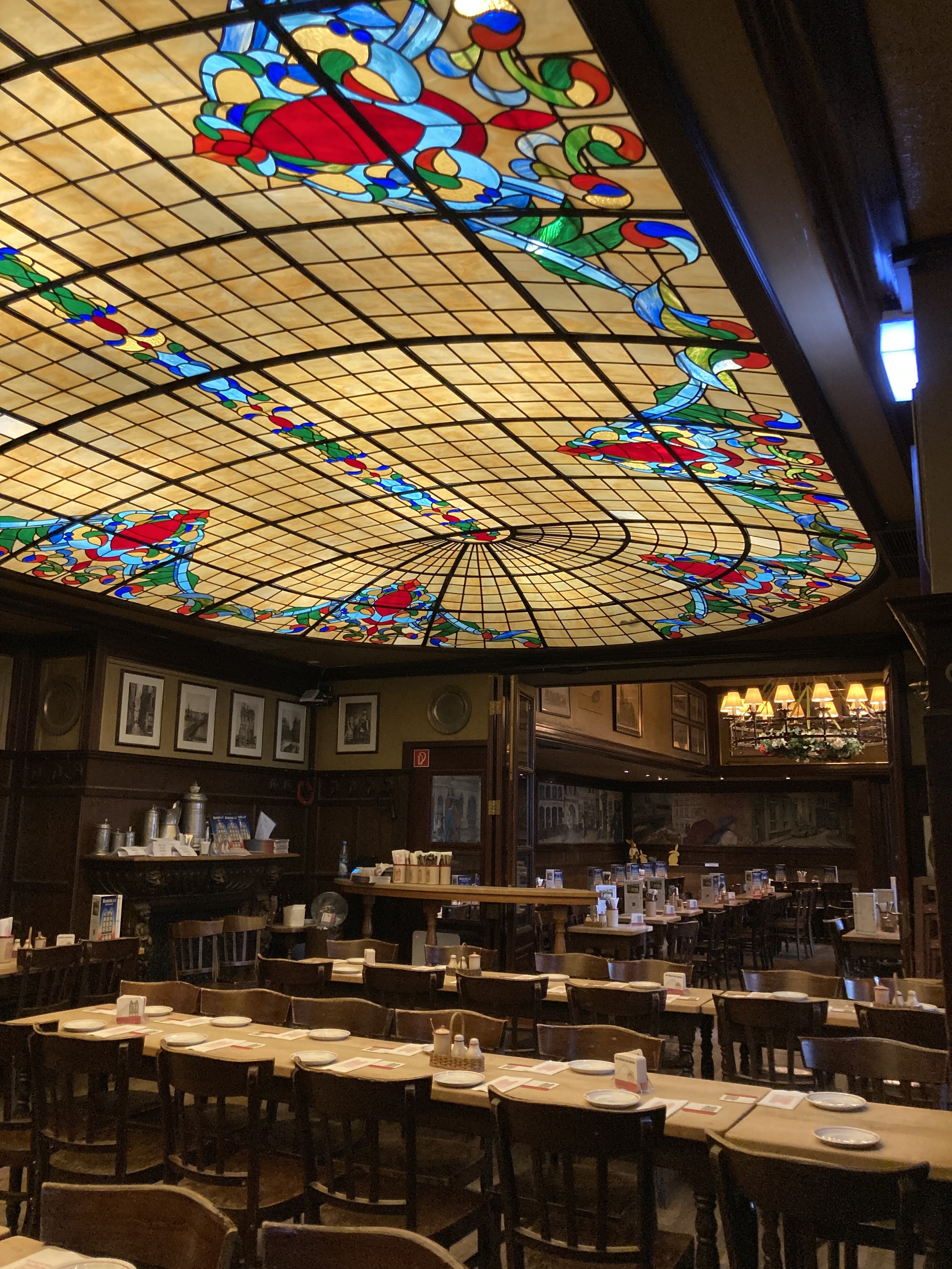One Day in Cologne, Germany
Cologne also has beautiful parks, green spaces, and walking paths.
Cologne (Köln in German) is a city of contrasts. The city has 2000-year-old Roman roots, some ruins of which are still visible underneath the modern city. Today Cologne blends the few Medieval structures that survived heavy bombing during WW II with reconstructed areas designed to look as they did before the war.
Add to these the modern architecture of the post-war city and you get a snapshot of modern-day Cologne.
Most of Cologne’s sights – including the Cathedral, the Historic Old Town, and the 12 Romanesque churches – lie on the west (left) bank of the Rhine River and within easy walking distance of the Viking ship dock just across the Hohenzollernbrücke (don’t ask me to pronounce it!) bridge on the opposite riverbank.
Cologne’s Left Bank - the Rhine, the Hohenzollernbrücke bridge, the Cathedral and the train station are all found here at the edge of the Old Town.
The second stop on my Viking Rhine River Cruise began with a morning walking tour led by an excellent local tour guide. The walk took us through the Old Town, past colorful tall houses, through small squares, and in front of the town hall with its tall clock tower. We even had a chance to sample the two famous Eau de Colognes (perfumes) produced in town. The walk ended in front of the Cathedral with plenty of free time to explore it on our own.
Cologne’s Old Town with its cobblestone streets, small squares lined with colorful buildings, shops, and cafes.
After lunch, the rest of the afternoon and evening was free to explore on our own. I appreciated that the cruise included a full day in Cologne as there was so much to see. Even with a full day, we barely scratched the surface of this complex city and I have lots of ideas of things to see - including museums, several historic churches, museums, and even a chocolate museum - on a return visit.
Cologne’s Cathedral of St. Peter
Some highlights of the day we spent in Cologne:
The Cathedral, officially the Cathedral of St. Peter. This is the most visited landmark in Cologne and for good reason. Built mostly in the 14th century (but not completed until much later), It is one of the tallest churches in the world. Its huge spires dominate the skyline of Cologne. Those spires also likely saved the church from destruction during the war as the Allied pilots used them as they navigated into Germany on bombing raids. The style is Gothic with flying buttresses and a forest of small spires on the exterior. The inside is a wonder. Its towering height is full of tall columns, ribbed ceilings, beautiful stained glass, paintings and statues, detailed mosaic floors, and iron work.
The most significant artifact in the Cathedral is the Shrine of the Three Kings (The Magi). The shrine, located behind the main altar, holds a large gold covered sarcophagus said to hold the bones of the Three Wise Men.
Historic photo of the destruction of Great St. Martin Church during WW II.
The Great St. Martin Church. With a one-day visit there wasn’t time to visit all 12 of the Historic Romanesque Churches, most of which were destroyed during the war and later rebuilt. My friend and I chose to visit St. Martin’s, a beautiful part of the skyline of Cologne. Smaller than the nearby cathedral, it has a central tall spire and smaller ones at each of its four corners. There are 3 apses, giving the lower part of the church a clover-leaf shape. Nearly destroyed during the war, it only reopened in the 1980’s. The interior is simple with little decoration save for remnants of paintings on the columns and some mosaic floor tile. The starkness and quiet, along with the distant echoes of war, were quite moving. Its location in the old part of the city, surrounded by colorful houses and small streets, gives it a very human dimension.
Love locks on the Hohenzollernbrücke. This long bridge serves as both a pedestrian bridge and a railway bridge. It connects the broad pathway on the right bank to the old town on the left. The bridge is full of love locks placed there by hopeful couples. The locks are of various shapes, sizes, and colors. Some look very old and some are shiny and new. There are so many that the city is worried about the weight they are adding to the bridge!
The nicest part about strolling across the bridge are the wonderful views of the city skyline, including the Cathedral and the nearby church of Great St. Martin.
Eau de Cologne. Perhaps the most famous product of the city of Cologne is a type of perfume which bears the city’s name. The history of Eau de Cologne has an interesting Italian twist. Giovanni Farina, born in Italy but a resident of Cologne in the early 1700’s, developed a perfume which, in his words, had the scent “of a spring morning in Italy, mountain narcissus, and orange blossom just after a rain”. He named it after his adopted city of Cologne and founded both a much loved scent and a family dynasty. Today the 5th generation of Farinas produces the citrus scented Eau de Cologne that bears their name. Of course, he had some competition - a few years later a local German man produced a similar perfume and even tried to market it under the Farina name. Legal battles ensued, were won by the Farina family, and the name of the other perfume was changed. Today that second perfume, re-named 4711, is equally famous.
Our guide brought along samples of both for us to test. Which was my favorite? It was the lighter, fresher scented Farina Eau de Cologne.
Local Beer. I am not much of a beer drinker, but I still found the beer culture in Cologne interesting, especially in the way that it is integral to the local identify. The beer produced here is called Kölsch and it is served in the many brewpubs in town. Production is regulated and only beers produced in and around the city, according to set standards, can be called Kölsch.
The pubs have an old-world atmosphere. The waiters wear traditional costumes as they carry round trays of beer in narrow glasses called stanges. The servings are small, around 6 ounces, but are automatically refilled when empty! To stop the refills, the coaster is placed on top of the glass.
We made a quick stop at a traditional brewpub - Peters Brauhaus (pictured above) - to have a look around. It was much too early in the morning for a beer, but fun to see the inside of this historic brewpub.
It is impossible to miss the importance of beer culture in Cologne. Look closely and you’ll find small gnome-like carvings of Köbes (waiters who serve the Kölsch) outside some of the pubs. Viking offered an optional excursion for a dinner in a local brewpub for those passengers who wanted to experience the culture first hand.
The Viking ship Baldur left Cologne at 10pm, headed for the dock at Braubach and visits to Koblenz and the Marksburg Castle. More on those stops in a future post.





